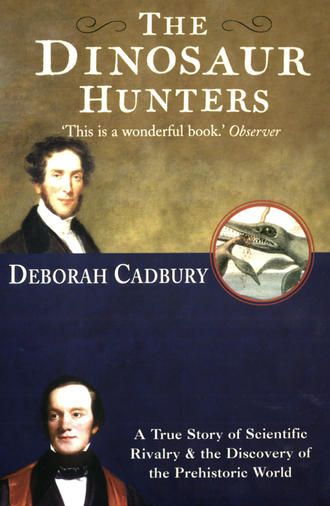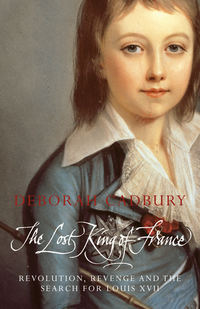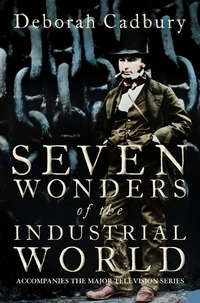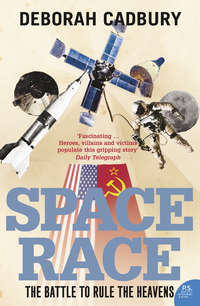
Полная версия
The Dinosaur Hunters: A True Story of Scientific Rivalry and the Discovery of the Prehistoric World
Gideon Mantell set about tracing specialist sources of living tropical plants in order to compare the fossils he uncovered. He was ‘much pleased’ with ‘the unrivalled collection of living palms of Messrs Loddiges of Hackney’, one of the few palm merchants in Georgian Britain. As news of Mantell’s curious finds spread, local people, too, provided unexpected help, such as: ‘the Honourable Mrs Thomas of Ratton, Eastbourne, who presented interesting specimens of the trunks of fossil palms from Antigua’. From these comparisons, Mantell deduced that several of the fossil stems and trunks he was uncovering with the giant animal bones were from ancient tree-ferns. ‘The surface of these fossils is rough, the trunk is nearly cylindrical … They resemble species of arborescent fern, perhaps Dicksonia?’ he speculated. Dicksonia is a contemporary tree-fern that can reach a large size, with a slender stem and huge fronds. Mantell sent fossils to Konig at the British Museum, who confirmed his suspicions: ‘Some tree ferns are very like this with regard to the lozenge-shaped bases of the fronds,’ he replied.
The largest fossil trunk in Mantell’s collection was fourteen inches in circumference and four feet in length. From the thickness of this trunk and the rudimentary branches it looked as if it had once extended a great deal further and was part of something tall and tree-like, not a little shrub. Mantell compared the measurements of this trunk to those of tree-ferns in New South Wales, which could grow to thirty feet with stems of only a foot in diameter. ‘From the imperfect state in which these [fossils] occur it is evident that the originals attained a very large size,’ he wrote incredulously. Huge tropical plants alongside huge reptilian animals: it was barely believable.
Yet each trip to Loddiges’ Greenhouses provided more evidence. Mantell soon identified cycads: ‘the impressions of the leaf stalks on the bark bear a great resemblance to those on the stems of Cycas revoluta,’ he wrote. Cycads look similar to short palms, the trunk covered with the woody bases of leaf stalks and bearing a big crown of leaves at the top. There were also fragments of unknown foliage, heavily blackened with charcoal and quite unlike anything in Loddiges’ Greenhouses. ‘These specimens are so entirely distinct from any that are known to exist in European countries that we seek in vain for anything analogous,’ Mantell observed. Many of the fossils he uncovered are now known to have been Bennettitales, an extinct group of cycad-like plants once dominant in the ancient Weald.
Concealed with this buried tropical forest were the remains of aquatic invertebrates. From his early studies on the Downs, Gideon Mantell was an expert on the marine invertebrates of the chalk deposits. The invertebrates of the Weald were different. He could not see the familiar whorls of the ammonite or snake-stone, of belemnites, nautilus or other shelled creatures which once swarmed in the primitive seas that formed the chalk. Instead there were the casts of shells that he did not recognise; impressions sometimes so faint that they left just the barest trace of their external forms: the hinge of two joined shells, as in certain types of clam and pearl mussel, or the fragmentary pieces of a species of snail, perhaps. It was indeed tantalising; fragments both familiar and unfamiliar, never quite forming a complete fossil or displaying a clear marking. Uncertain what they could be, Mantell wrote to his usual correspondents such as James Sowerby, an expert on fossil shells, hoping he would shed more light on these invertebrates.
As for the massive animal bones that were scattered among the debris of this tropical forest, they remained indecipherable; an ancient hieroglyphic for which he did not have the code. He was increasingly certain that many of the bones, such as the giant thigh bone, did not match those of the sea lizards. They were far too chunky and solid. Although some of the bones were rather like those of ancient crocodiles, he had two sets of very large teeth that were not: the worn teeth of a herbivore and the blade-like teeth of a carnivore. ‘Of the numerous specimens in my collection not one is perfect; by far the greater part consisting of fragments rounded by the action of water and deprived of the anatomical distinctions so necessary to the elucidation of the form of the original,’ he wrote, utterly baffled by these remnants of a ‘former creation’.
His investigations were becoming so compelling that other aspects of his life paled by comparison. ‘Murdered two evenings at cards,’ he complained in his diary. Whether attending the local sheep fair or the ever-popular Brighton races, as a doctor he had a position to maintain in the heart of the community. In provincial society it wouldn’t do to appear hurried, or unavailable. But each night when his duties were done he would pore over the details of the animal bones and tropical vegetation, trying to make sense of the wild profusion of relics from this ancient time.
On the evening of 4 October 1821, an unexpected visitor arrived at Castle Place who was able to help him. Mantell was summoned downstairs to meet a young man who ‘presents nothing remarkable, except a broad expanse of forehead,’ he wrote. ‘He is of the middle size … small eyes, fine chin and a rather reserved expression of countenance.’ The stranger introduced himself as Charles Lyell. Lyell had been visiting his former school in Midhurst, Sussex, when quarrymen had told him of a ‘monstrous clever mon, as lived in Lewes … who got curiosities out of the chalk-pits to make physic with’. The quarrymen were Mantell’s labourers, and Lyell was so intrigued by their account that he rode for twenty-five miles across the Downs to track the man down.
It was soon apparent that Lyell and Mantell had a great deal in common. ‘Mr Lyell is enthusiastically devoted to geology,’ Mantell entered in his diary; ‘he drank tea with us and we sat chatting on geological matters till now – midnight’. Lyell’s interest in geology had started while at Oxford University. Although studying classics, he had been drawn to Buckland’s inaugural lectures in which the professor was at his most electrifying. Lyell’s father had written to a friend, ‘Buckland’s lectures are engaging [my son] heart and soul at present.’ Afterwards, in keeping with his position as the eldest son of minor gentry, Lyell had embarked on a career in law in London, but his eyes gave him trouble. Eventually, his father had indulged his interest in science and taken him to Europe. During one carriage tour across the Alps, Lyell had studied the effects of glaciers on the landscape; on a second trip, he had observed the effect of rivers in forming a coastal plain on the Adriatic coast of Italy.
Since his family was wealthy, with a large estate in Scotland, Lyell had an independent income and more leisure for geology than Mantell. The following day, while Mantell was visiting patients, he went to explore the Sussex strata and then returned to Castle Place: ‘to have tea at six o’clock,’ Mantell wrote. ‘My few drawers of fossils were soon looked over, but we were in gossip until morning.’ The visit marked the beginning of an enduring friendship between these two men, both hoping to make a career from geology.
Although there is no record of their conversation over these two days, there is evidence that Lyell told Mantell of Buckland’s giant reptile in the Ashmolean Museum and they compared the Stonesfield fossils in Oxfordshire with those of Cuckfield in Sussex. Fired by these discussions, soon after leaving, Lyell lost no time in visiting Stonesfield to obtain a boxful of fossils that he despatched to the Lewes wagon office. Three weeks later, on 25 October 1821, Mantell wrote in his diary: ‘received an interesting collection of Stonesfield fossils from Mr Lyell; in many respects they resemble those of Cuckfield’.
Charles Lyell’s news of the huge reptilian bones in Oxford confirmed for Mantell that his fossils were not just of provincial interest. He learned not only that Georges Cuvier had concluded that the Stonesfield beast was a reptile, but also that it was at least forty feet long and as bulky as an elephant. Armed with this information, Mantell felt that his own speculations of giant lizards buried in the Weald did not seem quite so preposterous. He could now attempt to classify his own fossils by seeing which bore most resemblance to the giant Oxford lizard.
About this time, Mantell almost certainly heard from Lyell of William Buckland’s intention to publish a detailed paper on the Stonesfield reptile. Since Buckland, the famous Regis Professor, was planning to describe and name the new carnivorous lizard, it was hardly appropriate for the unknown Mantell to claim this opportunity for himself. However, no one had reported anything like the unidentified herbivorous teeth. Mantell felt, therefore, that he could be the first to identify this animal, new to science, and claim the recognition, without interfering in Buckland’s study.
Patiently taking advantage of any introduction he could negotiate, Gideon Mantell sent a prospectus of his planned book on the geology of Sussex to members of the landed gentry, inviting them to subscribe for copies. The Earl of Chichester, the Bishop of Durham, the Earl of Egremont and numerous others replied; in all he attracted two hundred subscribers. Better still, in 1821 an envelope arrived from Carlton House Palace. Mantell broke the royal seal, and read: ‘His Majesty is pleased to command that his name should be placed at the head of the subscription list for four copies.’ Quite how George IV had heard of the book is unclear; Mantell wrote back simply, ‘I am indebted to J. Martin Cripps Esquire for this honour.’ But there can be no doubt of Mantell’s response: the royal encouragement was, he said, ‘most gratifying to my feelings’. He had great expectations now that his book would place him ‘in the first circles’ and allow him some means of devoting more time to geology. The carelessly rich could so easily liberate him from his unrelenting daily round of chores.
Fossils of the South Downs, published in May 1822, reveals the progress Gideon Mantell had made in interpreting the strange fossils buried in the Weald. In the preface he pointed out ‘that his labours were snatched from hours of repose … a record made under circumstances unfavourable to literary pursuits’, and he even apologised for the quality of his wife’s drawings. ‘As the engravings are the first performances of a lady but little skilled in the art, I am most anxious to claim for them every indulgence … although they may be destitute of that neatness and uniformity which distinguish the works of the professed artist, they will not, I trust be found deficient in the more essential requisite of correctness.’
Gideon Mantell began by classifying the strata of Sussex. The lowermost and oldest Secondary rock he identified as the ‘Iron Sand’. Above this in order of succession he placed the limestone, sandstone and slate where he had found the giant bones, calling this the ‘Tilgate Beds’ named after the Tilgate Forest. This was followed by Weald clay, greensand and several chalk formations. On top of these Secondary layers came the more recent Tertiary formations such as London clay. He described many of the fossils he had found in the chalk. At a time when palaeoichthyology, the study of fossil fish, was unknown, Mantell had collected superb fish specimens. He also classified fossil invertebrates of the chalk and named more than sixty new species, including different types of ammonites, zoophytes, echinites, univalves and bivalves.
With some understatement that belied the months of feverish excitement, Gideon Mantell stated that the Tilgate beds in the Weald were ‘one of the most important series of deposits’ that he had uncovered. He attempted to catalogue the extraordinary fossils of the giant bones. Under the heading ‘Fossil Lacertae [Lizards]’ he wrote: ‘the teeth, vertebrae, bones and other remains of an animal of the Lizard Tribe of enormous magnitude are perhaps the most interesting fossils that have been discovered in the County of Sussex’. He described the characteristics of the sharp, curved carnivorous teeth and provided measurements of fragments of vertebrae and ribs, which were, he said, ‘decidedly analogous to those of the Lizard Tribe’. Other bones were also listed: the head of the radius (forearm), metacarpals (bones of the hand) and a thigh bone. ‘Some fragments of a cylindrical bone, probably the femur, indicate an animal of gigantic magnitude,’ he observed. ‘I have specimens from ten to twenty-seven inches long and from eleven to twenty-five inches in circumference, the substance of the bone being more than two inches thick.’
Recognising from the herbivorous teeth that he had evidence of a second type of giant creature different from the carnivorous Oxford monster, but perhaps not liking to court controversy by suggesting he had found a herbivorous lizard, he classified other giant bones under a different heading: ‘Teeth and Bones of Unknown Animals’. He wrote: ‘a brief description of these fossils is here inserted not in the hope of being able to elucidate their nature, but to record their existence in the Tilgate Forest with a view to future enquiries … [The teeth] are of a very singular character and differ from any previously known.’ He had the crown of the teeth only, he explained, unattached to the jaw. Although they were worn, some specimens were 1.4 inches long: ‘when perfect these specimens must have been of a very considerable size’.
Mantell even pointed out the analogy between the fossils of Tilgate and those of Stonesfield in Oxfordshire. Perhaps in a gentle spur to Professor Buckland, he wrote ‘the Stonesfield limestone has long been celebrated for the extraordinary character of its fossils, of which however, no detailed account has yet appeared before the public’. With the assistance of Mr Charles Lyell ‘and aided by an interesting collection of Stonesfield fossils for which I am indebted to his liberality,’ he continued, ‘I have been able to ascertain that the following organic remains occur in both deposits:
The teeth, ribs, and vertebrae of a gigantic animal of the Lizard Tribe.
Bones and plates of several species of Tortoise.
Teeth of a species of Anarhicas [wolf-fish].
Scales of Fishes and Lizards.
Bones of Birds? and of Quadrupeds [unknown]’
In his conclusion, Mantell stated boldly that entombed in the hills of Sussex ‘there are one or more gigantic animals of the Lizard Tribe’.
Although he could not name the creatures or have any clear conception of the kind of beast he was describing, this was the first attempted scientific description of dinosaur remains correctly identified as giant lizards. It was a vivid snapshot of a wondrous unknown past. ‘We know not the millionth part of the wonders of this beautiful world,’ he wrote. ‘It is the pleasing task of the geological inquirer … to discover order and intelligence in scenes of apparent wildness and confusion … to recognise a series of awful but necessary operations by which the harmony, beauty and integrity of the universe are maintained … which must be regarded as wise provisions of the Supreme Cause.’
As he proudly received the first printed copy at the beginning of May 1822, he had high hopes that this would prove a turning-point in his career. ‘I am resolved to make every possible effort to obtain that rank in society to which I feel I am entitled both by my education and my profession,’ he wrote in his journal. Surely, fired by these strange findings, some rich patron would step forward; his endless round of medical duties that took up so much of his time would, perhaps, soon be a thing of the past? At the very least, he hoped that his labours would be well received by the prestigious London societies: the Royal Society and the Geological Society.
Soon after the publication of his book, Mantell took some of his Sussex fossils to a meeting of the Geological Society in Covent Garden. The worn teeth of the giant herbivore were carefully wrapped in cloth. It was a long and tiring journey to London by chaise, stopping several times to change the horses, before he found his way to the House of the Geological Society at 20 Bedford Street. The Reverend William Buckland, now the Vice-President of the Society, had come down from Oxford with his friend the Reverend Conybeare. William Clift, Conservator of the Hunterian Museum of the Royal College of Surgeons, was also present.
Mantell’s diary and his subsequent accounts reveal that after the business of the meeting was completed, he showed these experts some of the worn, brown teeth from his unknown herbivorous animal. ‘I was discouraged by the remark that the teeth were of no particular interest,’ he wrote. The experts did not agree with Mantell that the ‘tooth’ belonged to an ancient herbivorous lizard. Far from such an exotic and fanciful verdict, they claimed: ‘There is little doubt the teeth belonged either to some large fish, allied to “Anarhic[h]as lupus” or wolf-fish, the crowns of whose incisors are of a prismatic form, or were mammalian teeth obtained from a diluvial [recent] deposit.’
Thus the combined wisdom of these august members of the Geological Society was that the tooth on which Mantell had pinned all his hopes belonged to nothing more exotic than a recent mammal such as a rhinoceros or an oversized fish! Mantell felt their dismissive lack of interest keenly. How could anybody build a reputation on a large fish? There was only one person there who dissented from the expert verdict – William Hyde Wollaston – and he happened to be the only person present who was not a geologist.
The scepticism of the experts at the Society stemmed from the fact that they did not accept Mantell’s classification of the strata of the Weald as Secondary rock. His conclusion that he had found a giant herbivorous lizard could be wrong if his interpretation of the Tilgate beds as ancient Secondary rock was incorrect. Numerous mammalian remains had been found in the more recent Tertiary rocks which lay above the Secondary strata: mammoths, elephants, rhinoceros and hippopotamus. If the Weald rocks in Sussex were Tertiary, then the giant fossils within them, far from belonging to some improbable species of herbivorous reptile, were much more likely to be from any of these large mammals. To persuade the experts that he had indeed found an ancient reptile, he had first of all to prove beyond doubt that the Tilgate beds were Secondary rock.
The eminent members pored over the details of Mantell’s findings and tried to fathom whether the limestone and sandstone of the Tilgate Forest were part of the ‘Purbeck’ formation, or ‘Ferruginous sand’, ‘Greensand’, ‘Iron-sand’ or ‘Hastings sand’. Their task was made all the harder since the names for the Sussex strata were not yet standardised and everyone was using different terms for the various layers, adding to the bewilderment. For Mantell, with each learned utterance from the experts the years of painstaking work were falling away, the exotic lizards of mythical proportions fast fading into nothing more than a figment of his imagination. He was just a country doctor, after all.
There was good reason to be confused when trying to place the strata of the Tilgate Forest into the geological sequence. Unlike the Stonesfield rock near Oxford where the fossils were found deeply buried, the rock at Whiteman’s Green in the Weald was inexplicably close to the surface. Was this, as Mantell claimed, a protrusion of older, Secondary rocks? Or was it a recent deposit, perhaps of Tertiary or even younger alluvial rocks, as Buckland thought. In Fossils of the South Downs Mantell made no attempt to conceal his perplexity about the exact position of the strata in which he had found his giant reptiles. Although he had correctly identified the Tilgate Beds as Secondary, he did admit that the precise ‘geological position of these beds [within the Secondary series] is involved in much obscurity and cannot at present be satisfactorily determined’.
Faced with the disbelief of the Geological Society, shortly after this meeting Mantell made yet another survey of the Sussex rocks, this time with his friend Charles Lyell. Riding west from the Tilgate Forest, Lyell and Mantell searched for quarries that contained strata and fossils that matched those found at Whiteman’s Green. They were hoping to find a site where the different layers of rock were clearly exposed in the geological sequence, so they could prove beyond doubt the exact position of the Tilgate Beds within the Secondary series of rocks. If they could convince the experts that the Tilgate rock was Secondary, then surely no one would doubt that Mantell had indeed found an ancient giant lizard?
To Mantell’s delight, they uncovered similar organic remains – bones, teeth and ‘numerous vegetables allied to the Cycas’ – in the sandstone cliffs of Hastings, Rye and Winchelsea. Even better, in a quarry near Rye they found the strata laid bare. Sandstone and limestone matching the Tilgate beds were embedded in the Secondary rock known as Iron-sand.
After this expedition, on 1 June 1822 Mantell wrote triumphantly to Dr William Fitton, the Secretary of the Geological Society: ‘I think we may fairly conclude that the sandstone of Rye, Winchelsea, Hastings, Tilgate Forest and Horsham are but different portions of the same series of deposits belonging to the “Iron-sand” formation.’ Mantell was now completely satisfied that the limestone and sandstone in which he had found the giant bones in the Weald could be placed in the Secondary series, well below the chalk formations. Consequently, in his letter to the Geological Society he went even further. In defiance of the experts such as Buckland, he restated his own interpretation of the animal remains that he had found. The large herbivorous teeth were now clearly identified as ‘Teeth of an unknown Herbivorous Reptile, differing from any hitherto discovered either in a recent or fossil state’. In addition, he confirmed that he had the teeth and bones of a lizard resembling those found at Stonesfield, and ‘Teeth and bones of crocodiles and other Saurian [lizard] animals of an enormous magnitude’. From the evidence of this letter the amateur Gideon Mantell was in no doubt that his beguiling view of a buried ancient world inhabited by several different species of giant reptiles – herbivores and carnivores – was an accurate one.
However, his letter was regarded as of such insignificance by senior members of the Society that it was not even read out, as planned, to the eminent company. For one thing, George Bellas Greenough, a Fellow of the Royal Society, a former MP and the first Chairman and President of the Geological Society, was convinced that iron-sand was always a marine deposit. Since Mantell had reported some freshwater shells mixed in with the giant bones, Greenough insisted that the Tilgate beds could not be iron-sand and refused to change his opinion in the light of Mantell’s findings.
William Buckland, too, was certain that the Weald rock resembled a recent, Tertiary rock he had seen while travelling in Italy and so was not a Secondary stratum. Consequently, in his view, Mantell’s ‘reptiles’ had to be large mammals. And such was the standing of both Buckland and Greenough that other members could not accept that a provincial surgeon could possibly have knowledge that surpassed that of the Oxford and London men who were the leaders in the field.
Over six months elapsed before it was decided that Mantell’s letter to Fitton on the strata of the Tilgate Forest would be read before the Geological Society. The minutes of the meeting on 17 January 1823 show that both Lyell and Mantell were present. At the Council committee meeting the following week, Mantell’s paper was read and passed on to referees to check before publication. However, it remained unpublished for a further three years. The archives reveal that Gideon Mantell had considerable difficulty getting his papers published by the Society. One unsigned letter from a referee considering his paper on fossil vegetables wrote: ‘the notice is not of sufficient importance to be printed’. George Greenough, too, turned down Mantell’s paper on the Tilgate Forest. William Buckland was so convinced that Mantell was wrong, he wrote specifically to warn him against claiming that the teeth and bones were found in ‘the older Iron-sand formation’. Mantell believed this advice came from the best of intentions and commented on ‘the generous kindness that marked his character’.








